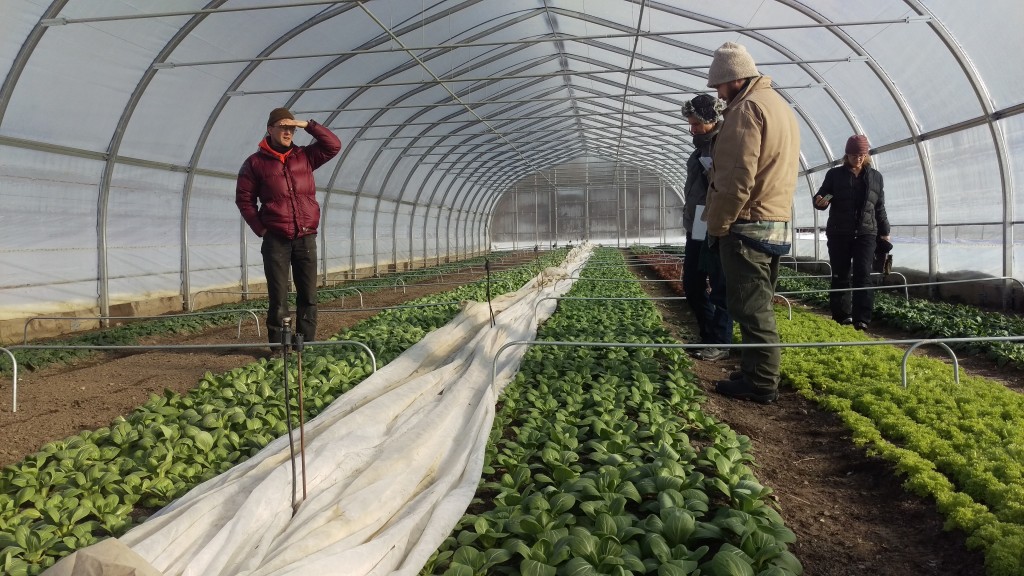by Rachel Stievater, UVM Catamount Farm Manager
There was no better way to begin 2016 than with UVM’s short course on Winter Greens Production. Corie Pierce of Bread and Butter Farm led this three-day course, which was based out of her farm and included field trips to Jericho Settlers Farm in Jericho, Intervale Community Farm in Burlington, and Unity Farm in Charlotte.
There were 15 of us who participated in the course, bringing a range of experience and intention. We were joined by a couple of growers from Maine, including a research technician from Johnny’s; a grower from Quebec; and many growers from various farms in Vermont. An over-arching recognition was that winter growing is an area for expansion for New England growers. This market can incorporate more growers, if you have the right infrastructure in place, and is appealing for newer growers looking to establish a foothold in local markets.
As we visited multiple sites, a number of topics were covered and reinforced, including: how to choose a greenhouse/hoop-house/high tunnel and the common brands that are available; how to crop plan for winter production; which crops, including varieties, grow well for winter production; the economics behind winter production, incorporating expenses and income; how to approach climate control for growing under cover in cold temperatures, including ventilation and moisture; how to manage insects and disease when growing under cover (weeds are less of an issue if you can enter December with weed-free houses). After an introduction to ideas and concepts, questions within the group directed the flow of discussion throughout the three days. One of the participants did not have a history of farming, but brought a background in business management. He raised a number of questions through that brought a helpful perspective.
Each of the farms we visited has been growing winter greens for a number of years. They all had anecdotes to share of lessons learned the hard way. As with any summer growing season, each winter season is different. The winters of 2014 and 2015 were bitterly cold – a growing challenge, to say the least. So far, 2016 can barely be classified as winter (both ICF and Jericho Settlers were harvesting greens outside their houses until just recently; they are just now turning to their crops in their hoop houses). I enjoyed seeing the evolution of houses at each of these farms. All of the farms had multiple houses that were erected over time. As growers are refining their approaches to winter growing, there are more sophisticated options in structures and equipment. We observed a range of options from the simple plastic-over-hoops with plywood end-walls, to the more complex, which can include temperature sensing roll-up sides and radiant bed heating.
Part of what I enjoyed about this course was seeing bed after bed of lush, green growth ready to be devoured by Vermonters. I walked away feeling optimistic about the potential of this market. Local markets can include many more growers pursuing winter growing. I know that the co-op where I shop stocks its shelves with greens from California at this time of year. This doesn’t have to be the case! We will be crop planning for winter growing at Catamount Farm starting next fall. I’m looking forward to training students of the Farmer Training Program in the skills and techniques necessary for successful and financially viable winter greens production. Greens, greens, greens!













